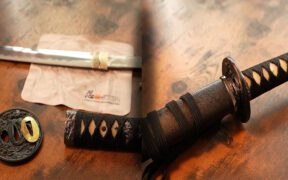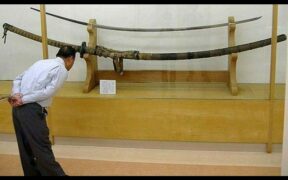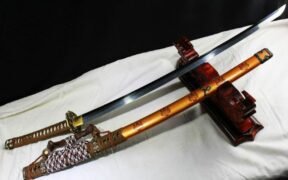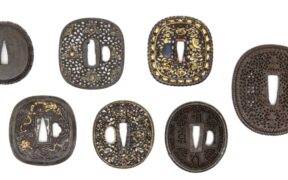Koshirae: Japanese Sword Mountings and Their History
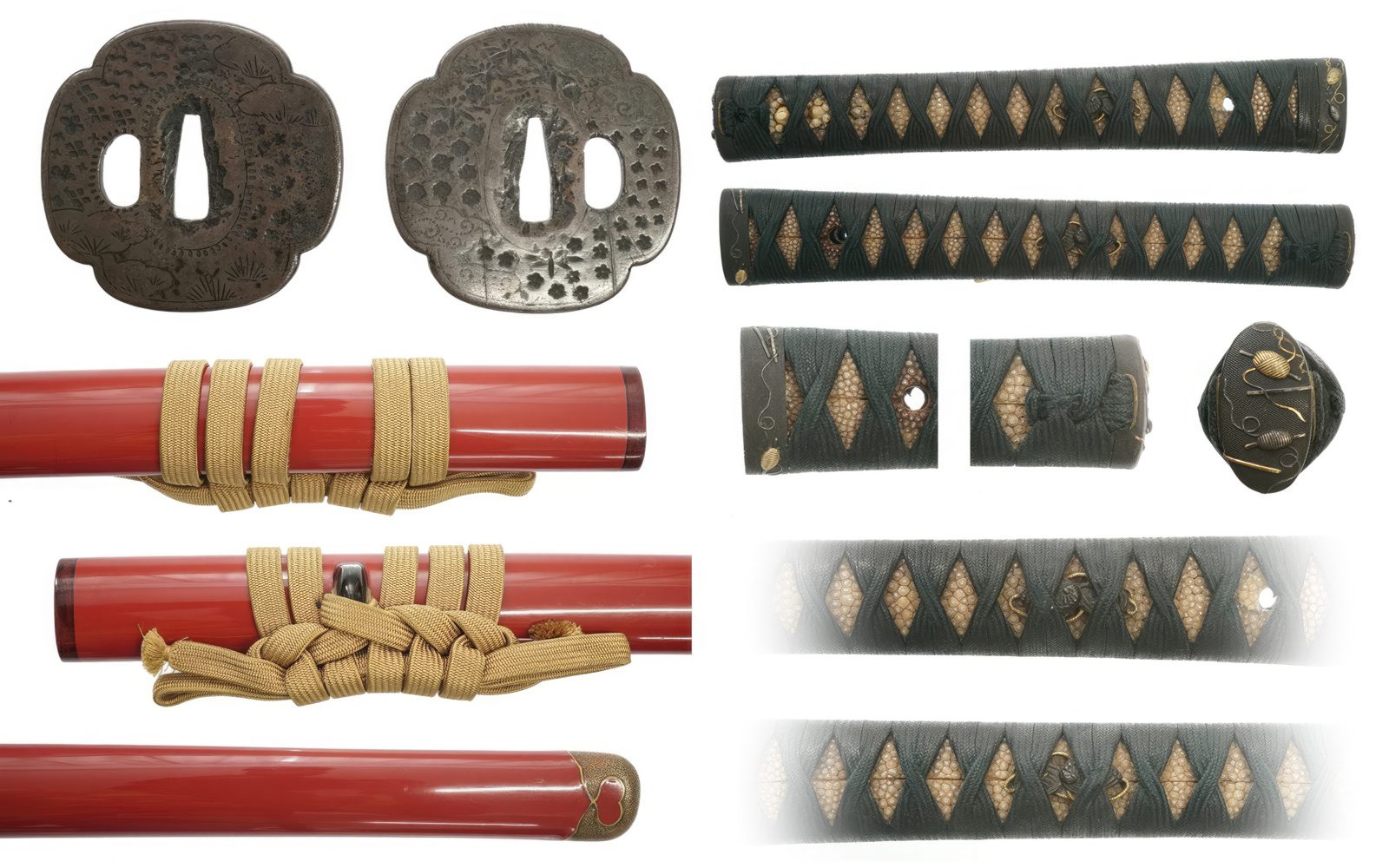
In the past, the Japanese swords were mounted in a complete, functional mounting called koshirae for either practical or ceremonial use. Koshirae, especially those of samurai swords, were frequently altered to keep up with the latest regulations, occasions, and trends. The study and appreciation of sword mountings and fittings are generally considered a different field from the Japanese sword connoisseurship, which primarily focuses on the blade itself.
Let’s explore the different types of sword koshirae, their historical significance, and how they evolved over time.
What Exactly Is a Koshirae?
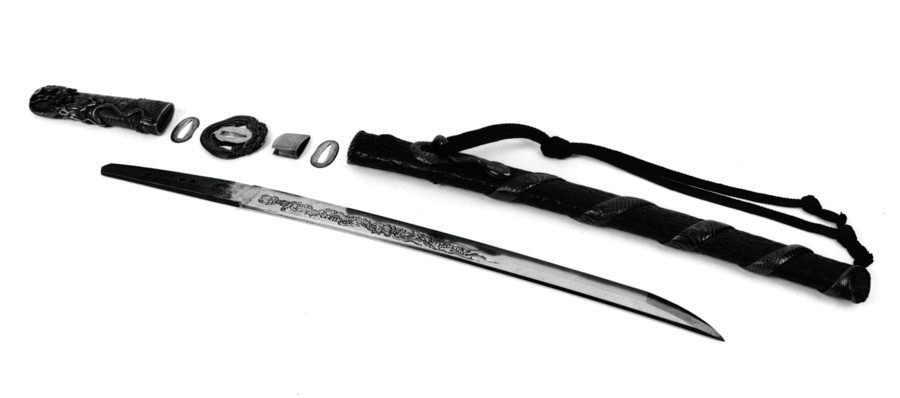
A koshirae is a collective term for complete mountings and fittings of edged weapons. While often associated with sword mountings, it may also refer to mountings of polearms, such as yari and naginata. The term koshirae comes from the verb koshiraeru, which means to create, make, manufacture, or produce. It can be literally translated as outfit or making.
A sword koshirae consists of the complete set of hilt (tsuka), handguard (tsuba), and lacquered scabbard (saya). Generally, removing a single pin allows the entire sword hilt to be swapped. It is contrary to a blade mounted in a shirasaya—an unfinished wooden scabbard—that is only equipped with a habaki (blade collar).

Other components of a koshirae include the kashira (pommel cap), menuki (hilt ornaments), tsukamaki (hilt wrapping), fuchi (metal collar), seppa (handguard washers), koiguchi or sayaguchi (scabbard mouth), kojiri (scabbard end cap), kurikata (sageo cord loop), and kaeritsuno or origane (scabbard hook to prevent slipping from the obi belt). Some scabbards also feature slots for kozuka (utility knife handle) and kogai (hairdressing tool).
Types of Sword Koshirae
Throughout history, the koshirae of Japanese swords have varied greatly due to regulations in each period, different types of blades, fashion, and the owner’s taste.
1. Tachi Koshirae
A tachi koshirae often refers to the mounting of the tachi—long curved swords that were worn slung from the belt, edge-down. It typically features two hangers (ashi) on the scabbard to attach it to the belt. Tachi swords were widely used from the late Heian to the early Muromachi period and had several types of koshirae.
It is important to note that the term tachi was also used as a generic term for sword, including the earlier straight, single-edged swords. The term tachi (written with the characters 大刀) means long sword or great sword, referring to straight, single-edged swords with a blade longer than 2 shaku (60.6 cm / 23.9 inches).
Additionally, the term tachi (written with the characters 横刀) means side sword or horizontal sword, referring to straight, single-edged blades under 2 shaku. The koshirae prototypes that predate the Heian period often refer to straight, single-edged swords. When the use of curved, single-edged blades became common, the term tachi was expanded with the characters (太刀).
Here are some of the koshirae types of the curved tachi (太刀):
Kenukigata-tachi
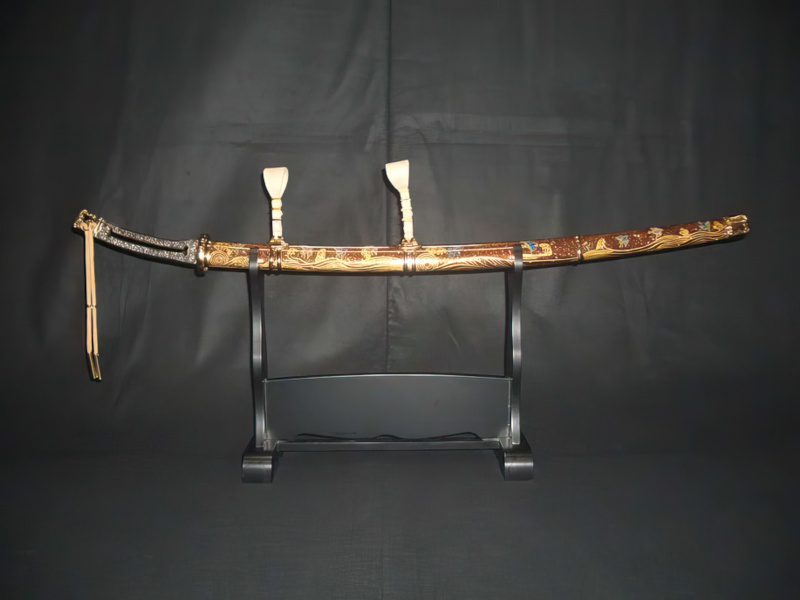
The kenukigata-tachi (毛抜形太刀) features tangs and hilts with openings. The term kenukigata means hair tweezer, a reference to its opening design. It emerged during the Heian period and was occasionally used as a ceremonial sword during the early Muromachi period.
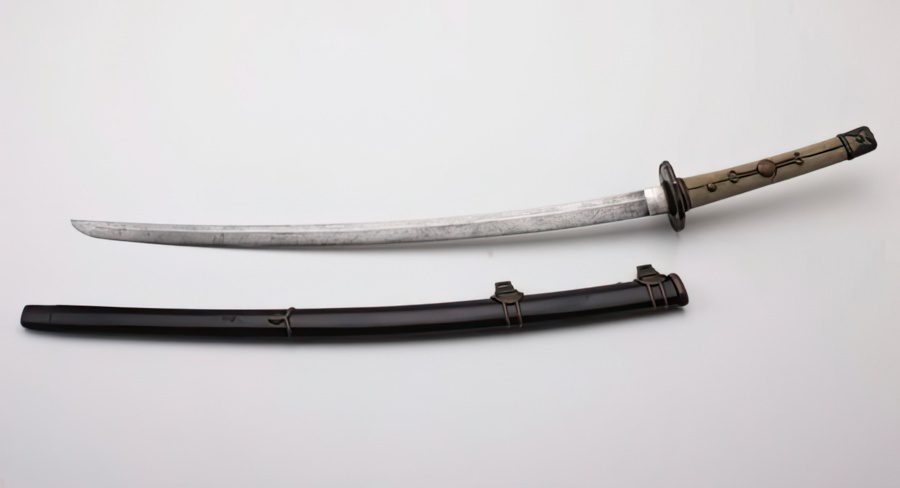
However, some Muromachi-period designs had a typical hilt without an opening and a large menuki ornament resembling the shape of a kenukigata-tachi openwork design. Therefore, the latter is called kenukigata-menuki no tachi (毛抜形目貫太刀), and they remained in use as ceremonial swords during the Edo period.
Hyogo-gusari no tachi
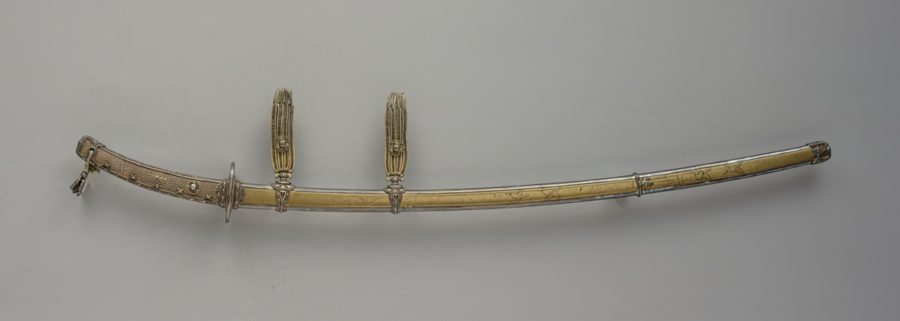
The hyogo-gusari no tachi (兵庫鎖太刀) is recognized by the scabbard’s hanging straps, made of chain or braided metal wire similar to that found on armor instead of a cloth string. The term hyogo-gusari means weapon chain, while hyogo-gusari no tachi translates as arsenal chain. It was popular among samurai during the late Heian and Kamakura periods and later became offerings to temples and shrines.
Itomaki no tachi
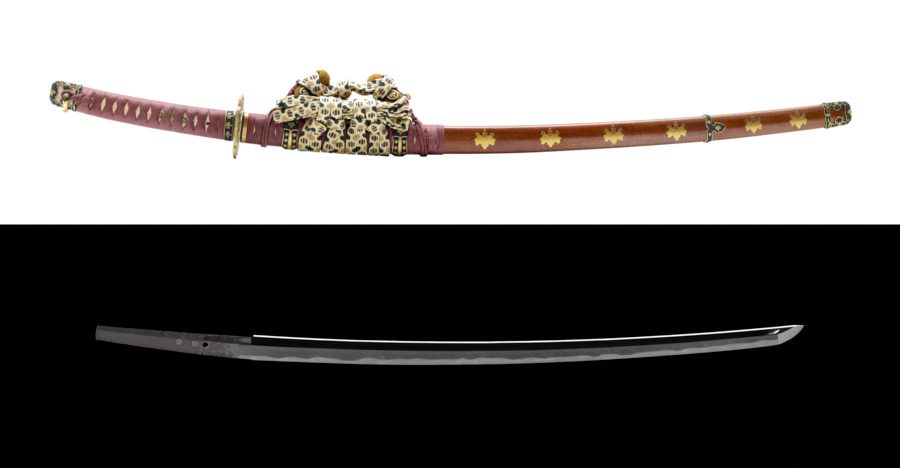
The itomaki no tachi (糸巻太刀) translates as silk-wrapped great sword. It is characterized by its hilt wrapping extending on the upper part of the scabbard. The scabbard wrapping is called saya-maki (鞘巻) or watari-maki (渡巻), so it is sometimes called sayamaki no tachi (鞘巻太刀), meaning scabbard-wrapped great sword.
The itomaki no tachi-koshirae was practical, as the extended wrapping provided a better grip and protected the scabbard from potential damage against the armor. It was popular during the Muromachi period and later became a ceremonial or formal court sword mounting in the Edo period worn with formal dress reifuku. It was also used for presentation swords presented to foreign dignitaries.
Hirumaki no tachi

A hirumaki no tachi (蛭巻太刀) is a tachi mounting in which the hilt and scabbard are wrapped spirally with a metal plate. The term hiru literally means leech. Initially, its purpose was additional reinforcement for the scabbard and the hilt. Later on, thin strips of metal, usually brass, copper, iron, or silver, were added for decoration.
Kawa-tutsumi no tachi

The kawa-tutsumi no tachi (革包太刀) refers to a tachi koshirae with a scabbard wrapped in very thick leather. It mainly refers to the battlefield-oriented tachi of the Kamakura period onwards. The term kawa-tutsumi no tachi is used if the leather cover is the most prominent characteristic of the koshirae.
2. Uchigatana Koshirae
An uchigatana koshirae refers to the mounting for wearing a sword thrust through the belt edge-up. It allowed thrusting the sword through the obi belt without hangers (ashi) found on the tachi. It was fastened via a sageo cord tied to the kurikata (loop) and the kaeritsuno or origane (hooks) to prevent it from slipping.
Katana Koshirae
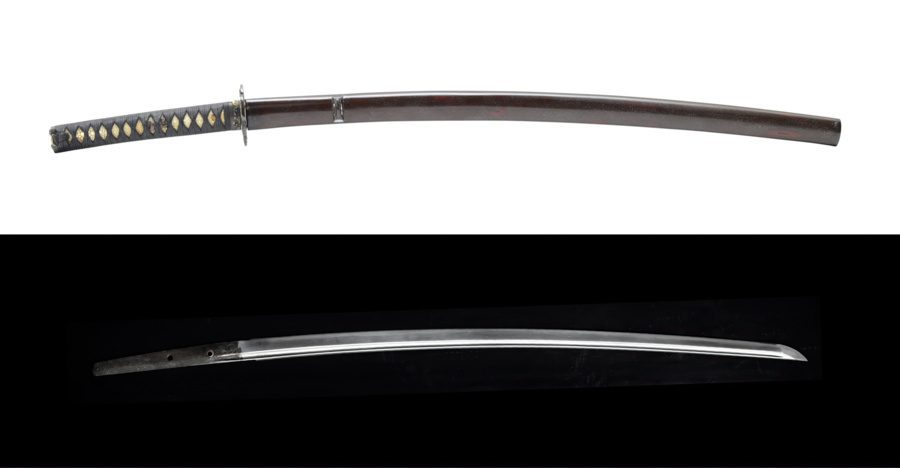
A katana is a Japanese long sword with a blade longer than 2 shaku (60.6 centimeters). It is fitted with an uchigatana-style mounting and worn through the obi belt with the cutting edge facing up. Wearing a katana was restricted to the samurai class, and it was typical for a wealthy samurai to have several koshirae for a single blade.
Wakizashi Koshirae
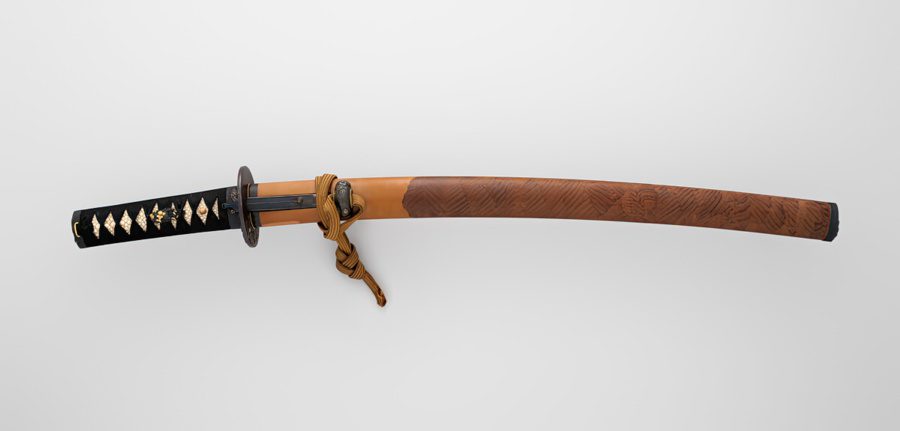
A wakizashi is a Japanese short sword with a blade length of 1 to 2 shaku (30.3 to 60.6 centimeters). A wakizashi koshirae is similar to a katana koshirae, only shorter. Since it is not exclusive to the samurai class, merchants, travelers, and townspeople used the short sword for self-defense. Several flamboyant and expensive mountings were also crafted for wealthy merchants.
3. Handachi Koshirae
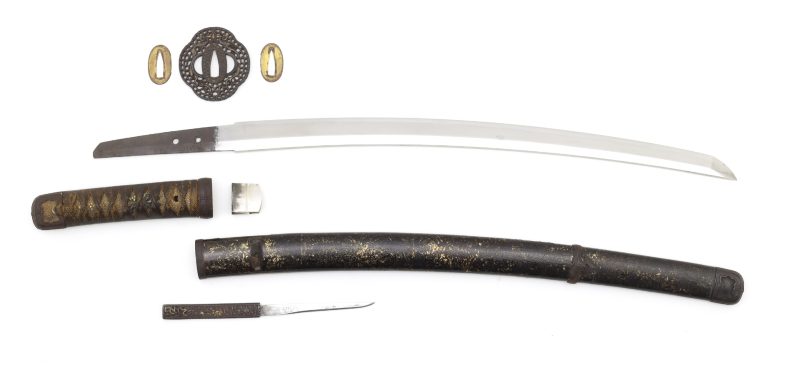
Handachi (半太刀), which literally translates as half tachi, is a sword mounting based on the earlier tachi. Unlike tachi koshirae, it lacked hangers and was designed to be worn edge-up, similar to the katana. This style gained popularity from the late 16th to late 17th century. During the Edo period, the handachi sword mounting was typically part of the samurai’s attire during hunting or official trips. Several handachi koshirae mount both katana and wakizashi blades.
4. Daisho Koshirae
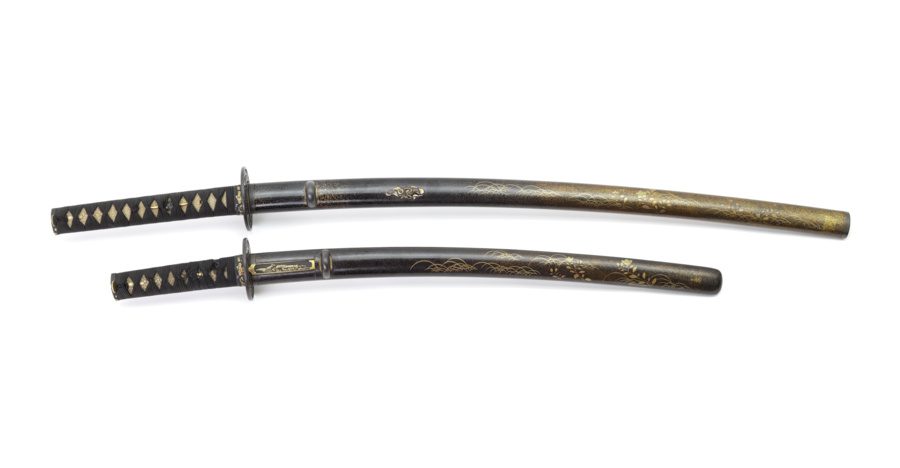
A daisho koshirae refers to the mountings of a daisho (大小)—a pair of swords, usually a katana and a wakizashi. These long and short swords are mounted in matching koshirae, although subtle differences often exist in a daisho set. During the Edo period, the samurai exclusively wore the daisho and showcased their refined taste and wealth through luxurious mountings.
5. Tanto Koshirae
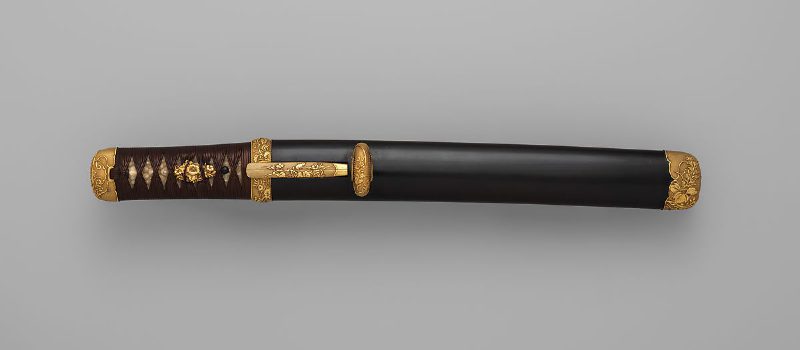
Tanto refers to Japanese blades measuring less than 1 shaku (30.3 centimeters), often called daggers. Tanto koshirae frequently includes a kozuka (handle for a utility knife) and kogai (hairdressing tool). Some had a hamidashi-style mounting featuring a very small handguard (tsuba) slightly larger than the fuchi (metal collar) or the koiguchi (scabbard mouth). Others were in aikuchi-style mounting, which lacks a handguard.
6. Aikuchi Koshirae
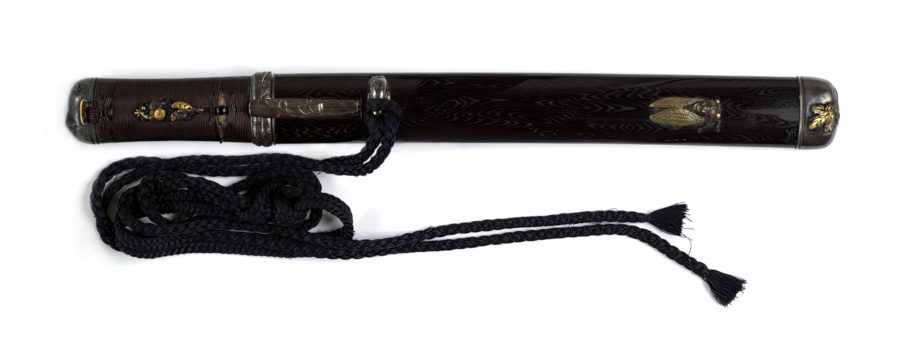
An aikuchi koshirae (合口拵) is a mounting style without a sword guard (tsuba). The term aikuchi means meeting mouth. It was originally used on the koshigatana—a blade accompanying the tachi—for close wearing with armor.
Later, the aikuchi koshirae became a fashionable mounting for tanto daggers from the Kamakura period onwards. The Japanese daimyo Uesugi Kenshin adopted the aikuchi-style mounting for his long swords, often called Kenshin koshirae.
7. Shikomizue
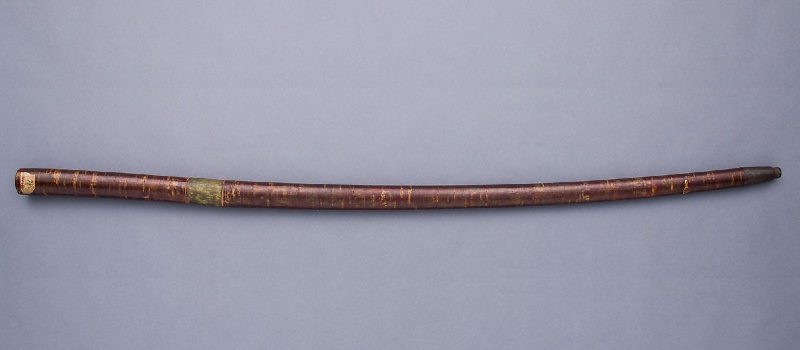
Shikomizue (仕込み杖) refers to swords in cane-form mountings, cleverly disguising the weapon. Such mountings were known since the Nara period and manufactured throughout all eras. However, the ban on swords during the Meiji period led to an increased demand for concealed weapons.
8. Toppei Koshirae
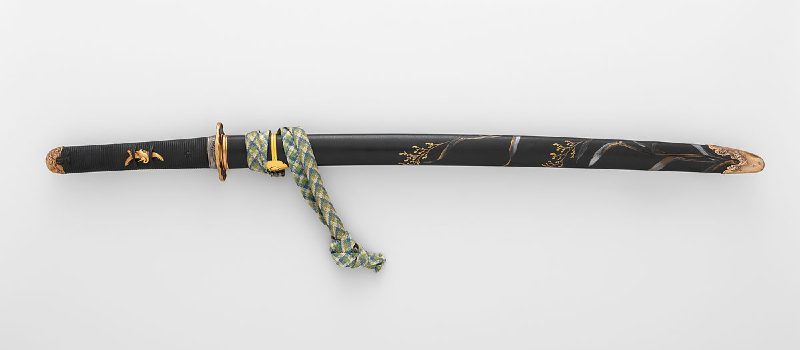
The toppei koshirae (突兵拵) showcases the influence of Western swords during a period of modernization in Japan’s armed forces. This koshirae style was worn with Western military uniforms, mounting katana, wakizashi, and tanto blades.
Sword Koshirae with Historical Origins
Some koshirae (sword mountings) have local or historical significance, deriving their names from the era or province of their origin. For more detailed koshirae descriptions, the book Koshirae – Japanese Sword Mountings by Markus Sesko serves as a valuable reference.
1. Tensho Koshirae
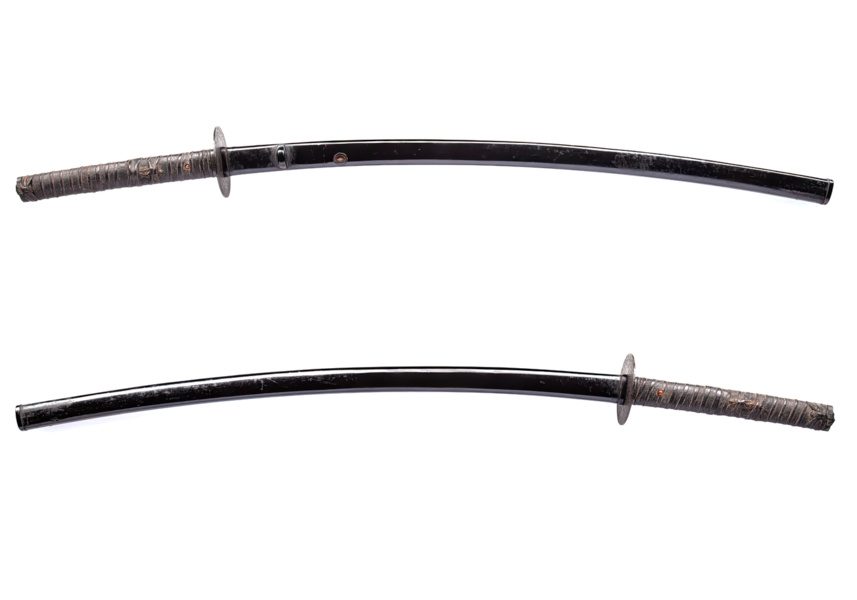
The Tensho-koshirae (天正拵) was named after the Tensho era, from 1573 to 1592. Characterized by a simple and utilitarian design, it featured a black leather hilt wrapping, a black lacquered scabbard (saya), and dark metal or horn fittings. It usually lacked a kozuka (utility knife handle) and kogai (hairdressing tool). The refined tea culture became popular in the late 16th century, and this understated style became fashionable.
2. Higo Koshirae
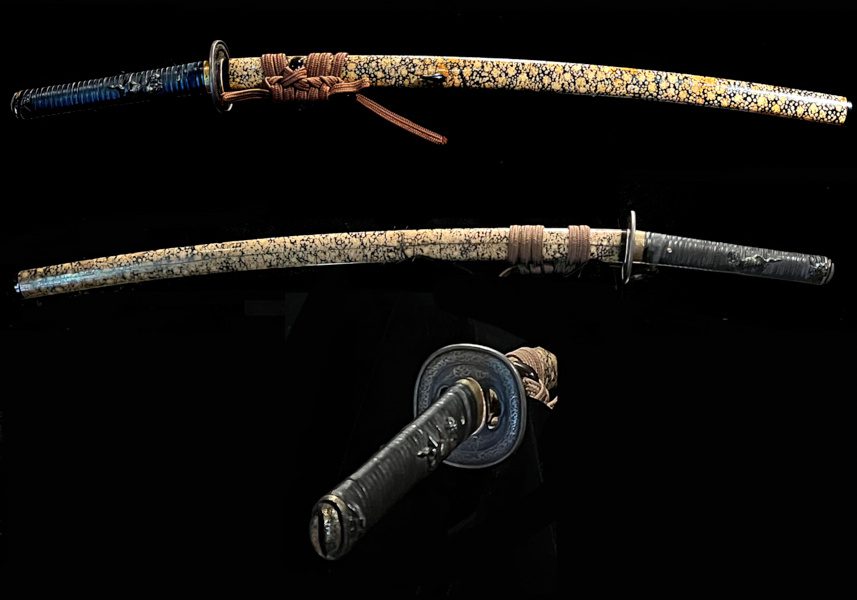
The Higo-koshirae (肥後拵) originated in the Higo province in Japan, referring to sword mountings crafted by Higo artisans or following the Higo style. It was influenced by the well-known tea aesthetics of the late Momoyama period and the personal taste of daimyo Hosokawa Tadaoki, a devoted tea ceremony follower. In some cases, the term Higo-koshirae includes sword mountings worn by Tadaoki.
Some variations of the Higo-koshirae are associated with specific swordsmiths, such as the Nobunaga-koshirae. Others were named after their owners, such as the Kiyomasa-koshirae worn by Japanese daimyo Kato Kiyomasa. Others have a historical context, like the Kishuso-koshirae, linked to the monk Kishuso, who Tadaoki killed with his sword.
3. Owari Koshirae
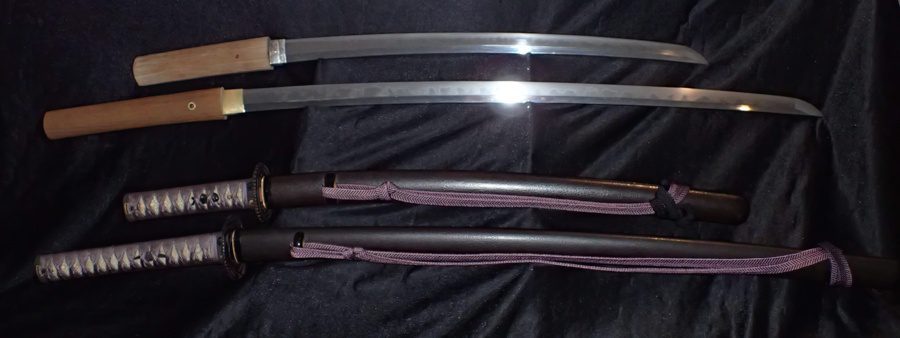
The Owari-koshirae (尾張拵) was named after the Owari province, which turned into a fief—a piece of land held on condition of providing services in return. The Owari fief adopted a martial-focused approach, resulting in simple and practically-oriented sword mountings. For instance, the menuki ornaments on the side of the hilt are flat to prevent from hindering the wielder’s hand.
The Yagyu-koshirae, named after the Yagyu school swordsmanship, is a variety of the Owari-koshirae. It usually had a smaller, thicker sword guard (tsuba) suited for the school’s fencing style. However, its menuki ornaments are placed towards the kashira (pommel cap) rather than the fuchi (hilt collar).
4. Satsuma Koshirae
Named after the Japanese feudal domain Satsuma, the Satsuma-koshirae (薩摩拵) was influenced by the Jigen school of swordsmanship within the province. More martial-focused than Owari, the Satsuma-koshirae typically lacked ornamentation to avoid hindering the swordsman’s hand. Its design often included a long, thick hilt, covered with cowhide rather than ray skin (same), with a leather or fabric wrapping without menuki ornaments.
The Satsuma-rebellion-koshirae, named after the Satsuma Rebellion in 1877, often had improvised mountings. This historic rebellion was the final samurai uprising against the Meiji government, and many samurai utilized swords with simple hilts, usually without menuki or ray skin. In some cases, the hilt wrapping was wrapped spirally rather than in the traditional manner.
5. Kaifu Koshirae
The Kaifu-koshirae (海部拵) was named after the Kaifu school of swordsmiths in Awa province. During the Edo period, many Kaifu swordsmiths produced all-purpose or hunting blades, which were also used by non-samurai. These Kaifu blades often had an aikuchi-style mounting without a sword guard (tsuba). Variations ranged from fully rattan-wrapped hilts and scabbards to plain wooden hilts with tsukamaki and rattan-covered scabbards.
6. Ebi-Sayamaki

Named after the lobster (ebi), the ebi-sayamaki (海老鞘巻) features a ribbed hilt and red lacquered scabbard. Its shape, broader towards the scabbard’s end (sayajiri), resembled a lobster’s. This style originated during the Heian period and was rarely seen before the Edo period.
History of Sword Koshirae
The koshirae had remarkable changes in design, materials, and purpose throughout various historical periods. While some were originally designed as sword mountings for warfare, they were eventually reserved for ceremonial use.
Sword Mountings Predating the Nara Period
During the Yayoi period, from around 400 BCE to 300 CE, the earliest metal swords in Japan were bronze swords called doken. However, these bronze swords were not intended as weapons but for ceremonial use. Japanese bronze swords were mounted with hilts but had impractical pommels, such as antenna-like and extended leaf-shaped pommels. Therefore, experts concluded that these swords were purely ceremonial or status symbols.
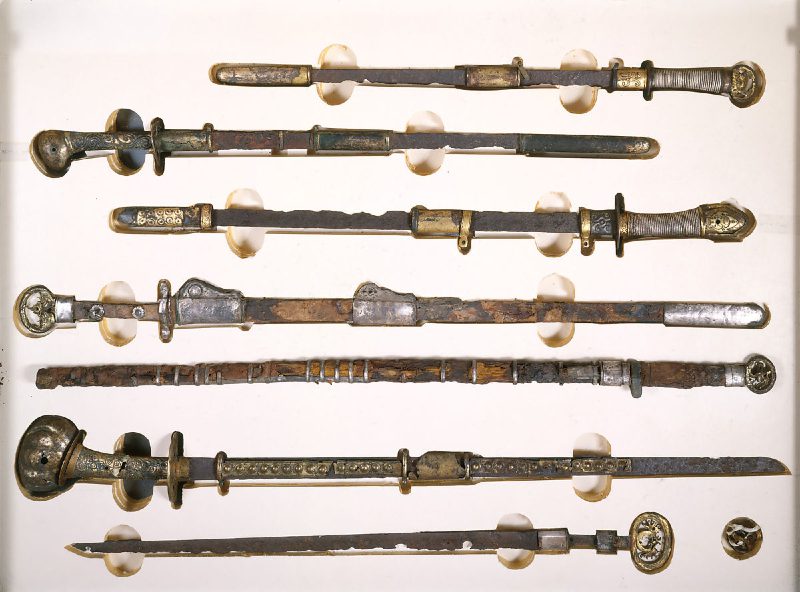
After the Bronze Age, Japan began importing iron swords from China and Korea. Those refined in Japan are categorized by their pommel designs, including kanto no tachi (ring pommel), ento no tachi (rounded pommel), hoto no tachi (square pommel), keito no tachi (fist-shaped pommel), and kabutsuchi no tachi (bulb-shaped pommel). These swords were worn like the later tachi, suspended from the belt with the cutting edge facing down.
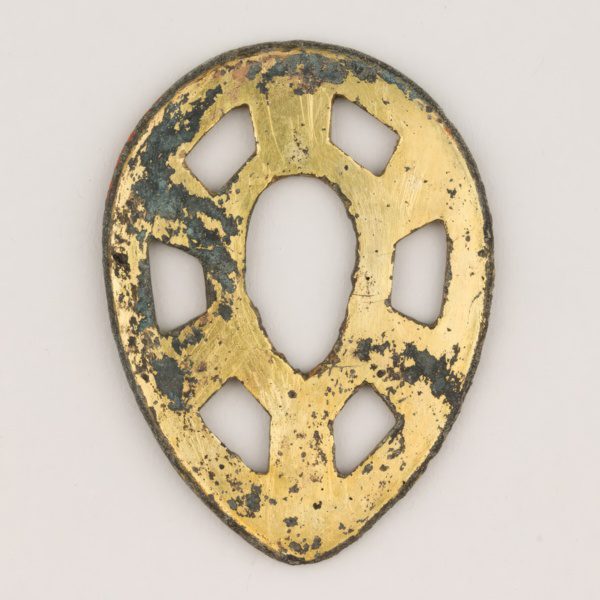
Early handguards (tsuba) were oval or round and made from gold, bronze, iron, or horn. Grips were wrapped with metal wire, often copper, silver, or gold. However, swords predating the Nara period (710 – 784) did not feature ray skin (same) covering on their hilts. Also, many scabbards were covered entirely with metal, from the mouth (sayaguchi) to the chape (sayajiri).
In the Nara Period (710 – 784)
During the Taika Reform in the mid-7th century, the Japanese government had several political innovations modeled after those of Tang China. As a result, Japanese high-ranking officials and aristocracy adopted Chinese-style swords. By the end of the 8th century, this influence extended to Japanese dress codes, weapons, and military equipment.
The koshirae prototypes developed during the Nara period, as seen on the kara-tachi, meaning Tang tachi. Some experts suggest that kara-tachi refers to swords imported from the mainland, while the term kara-yo-tachi implies swords made in Japan following mainland models.
Others speculate that both swords were manufactured in Japan, with the former used according to Tang ceremonial prescriptions and the latter being Japanized swords worn for unofficial events that were not strictly regulated.
The ceremonial sword kazari-tachi of the later Heian period is based on the kara-tachi of the Nara period. These swords are recognizable by their Chinese-style handguards, rayskin-covered hilts, and long metal fittings.
In the Heian Period (794 – 1185)
During the Heian period, a Japanese sword with a curved blade, known as nihonto, emerged. The shift in warfare strategies favoring mounted troops led to the creation of curved tachi swords designed for effective cutting from horseback. Various tachi koshirae styles tailored for warfare became popular, including the kenukigata-tachi and hyogo-gusari no tachi.

Several koshirae styles for ceremonial swords also emerged, mainly for court occasions. The kazari tachi served as symbols of rank and status, worn by members of the imperial family and court aristocrats. On the other hand, lower-ranking aristocrats wore the hosodachi, basically a stripped-down version of the kazari tachi.
In the Muromachi Period (1338 – 1573)
The Sengoku period of constant civil war emerged in the later part of the Muromachi period. The uchigatana-style mounting became widespread, allowing swords to be drawn quickly in combat.
By the end of the period, the uchigatana sword evolved into the katana, replacing the tachi sword. Swordsmiths started crafting it in varying lengths, producing a shorter version known as the wakizashi. During this time, schools of specialized tsuba artisans also emerged.
In the Momoyama Period (1574 – 1600)
The Momoyama period was a renaissance in Japan, and it became a tradition for the shogun, emperor, and daimyo to gift swords to their valued retainers as tokens of appreciation or rewards. As a result, sword mountings became elaborate and luxurious.
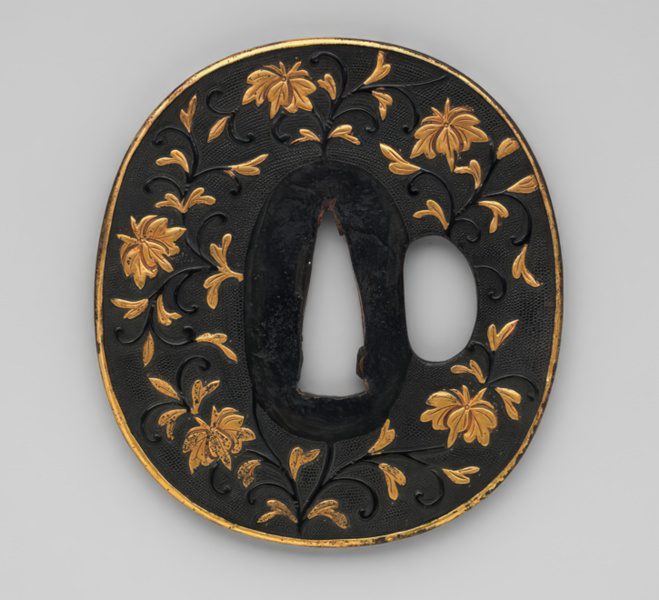
Many artisans began incorporating precious materials, including gold, into sword fittings. They also incorporated various techniques, such as carvings and inlays. Some koshirae were designed for combat, with a simple yet functional design. On the other hand, those with costly decorations and metal fittings served as gifts and were reserved for higher-ranking warriors.
In the Edo Period (1603 – 1867)
The Tokugawa government strictly regulated the wearing of swords with specific attire. The mountings of the Heian period, kazari-tachi and hosodachi, continued to be used in ceremonies and festivities at the imperial court.
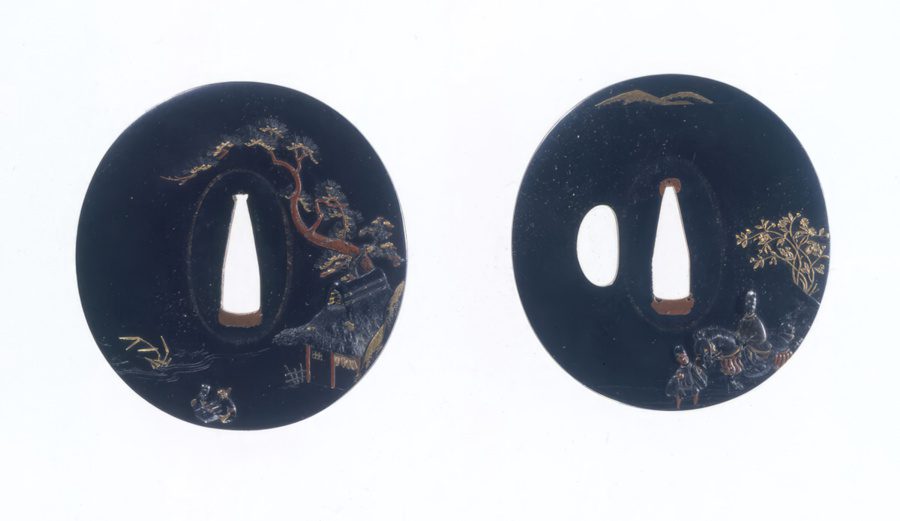
During the Edo period, the samurai traditionally wore the daisho pair of katana and wakizashi. Daisho koshirae ranged from simple designs for practical use and elaborate designs for ceremonial or formal occasions.
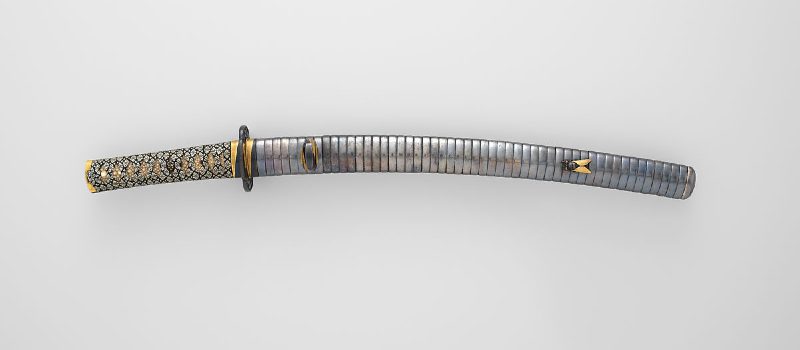
By the mid-Edo period, ready-made koshirae (dekiai-koshirae) mounted with affordable blades became widespread and could be bought at sword shops. Also, wealthy merchants often commissioned elaborate and expensive mountings for their short sword wakizashi.
